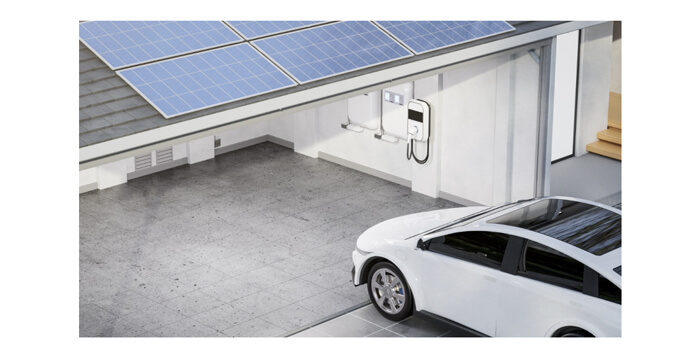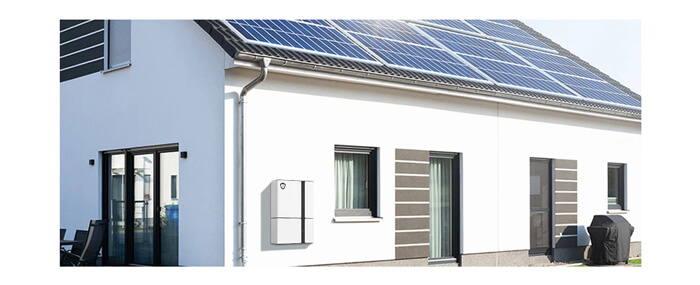Contents:
Batteries and solar cells are integral components of modern technology and renewable energy solutions. Both devices serve as sources of power but are unique in their construction, functionality, and applications. By understanding the distinct characteristics of batteries and solar cells, we can gain insights into their respective roles as examples of direct current (DC) devices and appreciate their influence on various industries.

What Are Batteries?
Batteries are energy storage devices that convert chemical energy into electrical energy through electrochemical reactions. Composed of one or more electrochemical cells, a battery has positive (cathode) and negative (anode) terminals connected by an electrolyte. When a circuit is closed, electrons flow from the anode to the cathode, generating direct current (DC). Batteries are typically categorized by their chemical composition, such as lithium-ion, lead-acid, nickel-cadmium, and alkaline.
Applications of Batteries
Batteries power a wide range of devices, including:
-
Consumer electronics: Mobile phones, laptops, and wearable devices.
-
Electric vehicles (EVs): Cars, bikes, and other forms of transportation.
-
Medical devices: Pacemakers, defibrillators, and portable diagnostic equipment.
-
Emergency power systems: Backup power for critical infrastructure and communications.
What Are Solar Cells?
Solar cells, also known as photovoltaic (PV) cells, are devices that convert sunlight directly into electricity through the photovoltaic effect. When photons from sunlight hit the surface of a solar cell, they release electrons, creating an electric current. Solar cells generate direct current (DC) electricity, which can be stored in batteries or converted to alternating current (AC) for immediate use in homes and businesses.
Applications of Solar Cells
Solar cells are essential in:
-
Residential and commercial solar panels: Providing renewable energy for homes and businesses.
-
Remote and off-grid power: Powering isolated areas without grid access.
-
Spacecraft and satellites: Offering a reliable energy source in space.
-
Portable solar chargers: Charging small devices like mobile phones and GPS units.
Batteries and Solar Cells as Direct Current (DC) Devices
Both batteries and solar cells produce direct current (DC) electricity. In DC power, the electric charge flows in a single, unidirectional path, unlike alternating current (AC) where the current changes direction periodically. Many electronics and renewable energy systems rely on DC, as it is more compatible with energy storage solutions and requires fewer conversion steps.
Key Advantages of DC Power in Batteries and Solar Cells
-
Efficient storage: DC power aligns with battery storage systems without needing additional conversions.
-
Minimal energy loss: Direct current minimizes power loss during transmission, especially over shorter distances.
-
Renewable compatibility: Solar energy is generated as DC, making it more efficient to use in conjunction with battery storage for renewable applications.
Comparison of Batteries and Solar Cells
To better understand their differences and applications, here is a comparison of batteries and solar cells:
|
Aspect
|
Batteries
|
Solar Cells
|
|
Power Output
|
Direct Current (DC)
|
Direct Current (DC)
|
|
Energy Source
|
Chemical reactions
|
Sunlight
|
|
Energy Storage
|
Yes, stores energy chemically
|
No, converts energy immediately
|
|
Typical Use Cases
|
Consumer electronics, vehicles, medical devices
|
Residential and commercial power, space applications
|
|
Environmental Impact
|
Varies, with some concerns over disposal and recycling
|
Renewable, reduces dependence on fossil fuels
|
Advantages and Benefits of Batteries
Batteries have transformed portable and mobile applications, allowing devices to operate without being tethered to a power source. Their portability, compact size, and ability to provide reliable power on demand make them essential across many fields.
-
Reliability: Batteries offer consistent, predictable power for applications ranging from everyday electronics to critical life-saving equipment.
-
Portability: From compact lithium-ion cells to larger batteries for electric vehicles, batteries enable on-the-go power without dependence on an electrical grid.
-
Scalability: With modular designs, battery capacity can be scaled by combining cells, enabling large-scale storage solutions for renewable energy or smaller, personal energy storage devices.
Benefits of Solar Cells
As renewable energy sources become increasingly crucial, solar cells stand out due to their sustainability, low environmental impact, and accessibility. Unlike fossil fuels, solar cells use an abundant, renewable energy source — sunlight — to generate power.
-
Clean Energy Production: Solar cells emit no greenhouse gases or pollutants during operation, reducing the carbon footprint.
-
Cost Savings: Once installed, solar cells can provide free electricity, significantly lowering utility costs over time.
-
Accessibility: Solar technology can power remote locations, rural communities, and areas with limited infrastructure, promoting energy independence.
-
Durability: With minimal maintenance, solar cells can operate for decades, making them highly durable and cost-effective over time.
Key Challenges for Batteries and Solar Cells
Despite their advantages, both batteries and solar cells face challenges that can hinder their adoption and performance in specific applications.
Challenges for Batteries
-
Environmental Concerns: Certain battery types, like lead-acid and nickel-cadmium, contain hazardous materials, leading to potential disposal and recycling issues.
-
Limited Lifespan: Batteries degrade over time, which affects their efficiency and capacity, leading to the need for regular replacements, especially in high-demand applications.
-
Charging Infrastructure: For electric vehicles and larger battery applications, the availability of charging stations and infrastructure poses a significant barrier in many regions.
Challenges for Solar Cells
-
Weather Dependence: Solar cell output is directly influenced by sunlight availability, making them less effective in regions with limited sun exposure or during cloudy days.
-
High Initial Costs: The upfront cost of solar installation can be substantial, though incentives and long-term savings often mitigate these expenses.
-
Energy Storage Needs: Since solar cells produce electricity only when sunlight is available, energy storage solutions (often in the form of batteries) are essential to provide power during nighttime or cloudy days.
Emerging Technologies and Trends
Ongoing research and development in battery and solar cell technology focus on increasing efficiency, reducing costs, and enhancing sustainability.
-
Solid-State Batteries: Solid-state technology replaces the liquid electrolyte in conventional batteries with a solid electrolyte, which can increase safety, energy density, and lifespan, promising a breakthrough for electric vehicles and portable electronics.
-
Perovskite Solar Cells: Perovskite solar cells are emerging as a promising alternative to traditional silicon-based cells due to their high efficiency, flexibility, and potentially lower manufacturing costs.
-
Battery Recycling Innovations: Companies and researchers are exploring sustainable recycling methods to recover valuable materials like lithium, cobalt, and nickel from used batteries, addressing environmental concerns associated with battery waste.
-
Integrated Solar Solutions: Solar-integrated products, such as solar roof tiles and solar windows, aim to seamlessly incorporate photovoltaic technology into buildings, providing clean energy without the need for traditional solar panel installations.
Synergy of Batteries and Solar Cells
The combination of batteries and solar cells creates a resilient energy system that harnesses, stores, and efficiently distributes renewable energy. This synergy enables applications like solar power systems with battery backups, providing a reliable and continuous power supply even when sunlight is unavailable. By pairing solar cells with batteries, users can achieve true energy independence, harnessing daytime solar energy and storing it for use at night or during power outages.

Batteries and Solar Cells in Key Industries
As batteries and solar cells evolve, they are increasingly applied across multiple industries, each benefiting from unique aspects of these technologies.
Transportation and Electric Vehicles (EVs)
The transportation sector is undergoing a transformative shift from fossil fuels to electric power, with batteries at the core of this evolution. Lithium-ion batteries, known for their high energy density and efficiency, have enabled the rise of electric vehicles (EVs), reducing dependency on gasoline and significantly lowering emissions.
-
Range and Performance: Advances in battery technology are pushing the boundaries of EV range, enabling longer drives on a single charge and faster acceleration.
-
Charging Speed: Innovations such as fast-charging networks and wireless charging infrastructure aim to address one of the main barriers to EV adoption — charging speed and convenience.
-
Fleet Electrification: Public transportation and delivery companies are increasingly adopting EVs to cut down on emissions and operational costs, with battery-powered buses, vans, and trucks becoming more commonplace.
Residential and Commercial Energy Solutions
Batteries and solar cells are central to creating sustainable energy solutions for both residential and commercial buildings. By capturing and storing solar energy, these technologies enable households and businesses to reduce grid dependency, manage electricity costs, and even earn from excess energy production.
-
Home Energy Storage: Homeowners can store solar energy in batteries to power their homes after dark or during peak usage periods, reducing their reliance on the grid.
-
Microgrids and Energy Independence: Communities are building microgrids powered by solar energy and supported by battery storage, providing reliable, localized power even in the event of grid failures.
-
Commercial Energy Management: Businesses are adopting solar energy systems to power operations sustainably, with battery storage ensuring energy availability during non-peak sunlight hours.
Telecommunication and Data Centers
The telecommunication and data center industries require constant, reliable power to prevent interruptions in service. Batteries and solar cells are becoming critical in these sectors as sustainable alternatives to conventional power sources.
-
Backup Power Systems: Telecommunication towers and data centers use battery systems as backup power sources to maintain operations during grid outages.
-
Remote Powering: In remote areas where extending grid infrastructure is costly, solar cells with battery storage provide a dependable energy source for communication networks and data facilities.
Innovations in Energy Management
Energy management is essential for maximizing the efficiency of batteries and solar cells. New technologies and software platforms are enabling better integration and usage of these renewable energy solutions.
-
Smart Battery Management Systems (BMS): Advanced battery management systems monitor and optimize battery performance, extending the life of battery packs in EVs, home storage systems, and grid applications.
-
Energy Storage as a Service (ESaaS): This model enables businesses to lease energy storage systems rather than owning them, reducing the upfront cost barrier and allowing more flexible access to battery power.
-
Grid-Interactive Solar Systems: Solar systems can now communicate with grid operators, allowing energy to be fed back to the grid when production exceeds demand, providing an additional revenue stream for users and supporting grid stability.
-
Artificial Intelligence (AI) in Energy Management: AI algorithms are improving how solar and battery systems predict energy production and usage patterns, optimizing storage levels, and reducing energy costs.
Importance in the Global Transition to Renewable Energy
As the global energy landscape shifts from fossil fuels to renewable sources, batteries and solar cells play indispensable roles in the transition. Both technologies address critical needs within sustainable energy frameworks, such as reducing carbon emissions, managing peak energy demand, and enhancing energy security.
Carbon Footprint Reduction
Widespread adoption of solar cells and batteries helps mitigate carbon emissions, a primary goal of global climate initiatives. By replacing coal and gas power plants with solar-based systems and electrifying transportation, the reliance on carbon-intensive energy is minimized.
Peak Demand Management
The ability to store energy generated during low-demand periods and release it during peak times is a valuable asset for grid stability. Batteries paired with solar cells contribute to demand-side management by reducing pressure on the grid during high-demand hours.
Energy Security and Resilience
In the face of natural disasters, aging grid infrastructure, and geopolitical tensions, energy security is a growing concern. Solar cells and battery systems enhance resilience by enabling local energy production and storage, reducing dependency on centralized grids that may be vulnerable to disruption.
Accessibility and Economic Growth
Renewable energy systems empower developing regions to leapfrog traditional energy infrastructure, providing reliable and affordable power in areas without extensive grid coverage. By offering access to clean energy, batteries and solar cells support economic development, education, healthcare, and overall quality of life improvements.
FAQs on Batteries and Solar Cells







